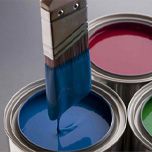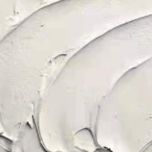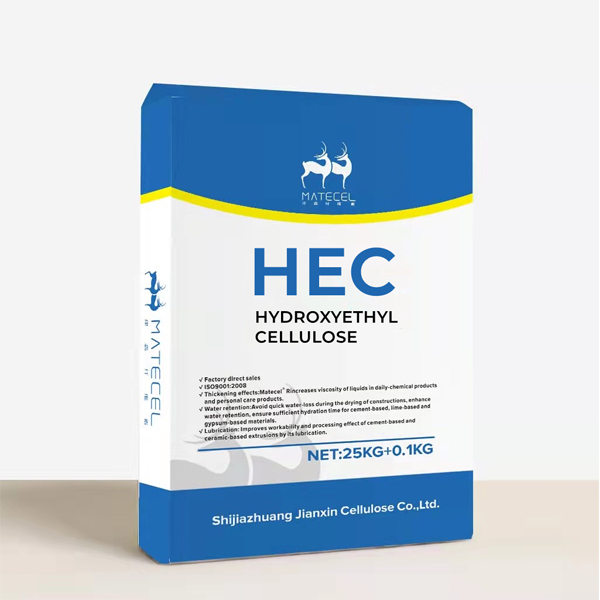
Hydroxy ethyl cellulose (HEC), a non-ionic, water-soluble polymer, is a white, free-flowing granular powder. Nature-derived from sustainably sourced cellulose, MATECEL® HEC products are water-soluble, non-ionic polymers that can be used in a variety of personal and home care applications. It is easily dissolved in cold or hot water to give crystal-clear solutions of varying viscosities. These efficient thickeners perform across a wide pH range and demonstrate high salt tolerance and broad surfactant compatibility, enabling clear formulations.
Hydroxyethyl cellulose (HEC) powder is a water-soluble polymer derived from cellulose. It is widely used in various industries due to its thickening, gelling, and stabilizing properties.
MATECEL® HEC Features:
Good enzyme resistance
Smooth leveling and flow
Advanced thickening ability
Improve suspension rate
MATECEL® HEC Application:

Paints

Cosmetics and detergents

Construction

Pharmaceuticals

Food Industry

Oil and Gas
Package Information

| Item | Specification |
| Size | 850mm*600mm*100mm |
| Weight | 25 KG/Bag |
| Corlor | Blue, White, Yellow |
| Storage | Dry and clean conditions |
Solubility: HEC powder dissolves readily in cold or hot water, forming clear, viscous solutions.
Thickening: Hydroxyethyl Cellulose powder is Effective at low concentrations, providing high viscosity.
Stability: Hydroxy ethyl cellulose is stable over a wide pH range and compatible with many other ingredients.
Film Forming: HEC powder can form flexible, clear films, making it useful in coatings and adhesives.
Today, we have become one of the most important producers of cellulose ethers and other construction additives in China. If you have any questions about hydroxyethyl cellulose powder, please contact us.
Hydroxyethyl cellulose (HEC) is generally considered safe for consumption in food products, but it's important to distinguish between food-grade and industrial-grade HEC.
Approval and Regulations: Food-grade HEC is approved by various health and safety regulatory authorities, such as the FDA (Food and Drug Administration) in the United States, for use in food products. It is often listed as a food additive and can be found under specific regulations concerning its use and safety limits.
Uses in Food: In the food industry, HEC is used as a thickener, stabilizer, and emulsifier. It can be found in products like sauces, dressings, beverages, and processed foods to improve texture and stability.
Safety: Food-grade HEC is considered safe for consumption when used within the recommended limits. It is non-toxic, non-allergenic, and does not contribute to the caloric value of the food. It is also indigestible, passing through the digestive system without being absorbed, similar to dietary fiber.
Not for Consumption: Industrial-grade HEC, used in applications like paints, coatings, and construction materials, is not intended for consumption. It may contain impurities or additives not suitable for ingestion.
Potential Risks: Consuming industrial-grade HEC could pose health risks due to these impurities. Therefore, it should never be used in food or pharmaceutical products.
General Precautions:
Source Verification: Always ensure that the HEC used in food products is specifically labeled and approved for food use.
Regulatory Compliance: Follow guidelines and regulations set by health authorities regarding the use and acceptable daily intake of food-grade HEC.
How is hydroxyethylcellulose (HEC) used in water-based paint?
HEC is the abbreviation of hydroxyethyl cellulose. It is a water-soluble natural or semi-synthetic polymer that is the product of chemical modification of cellulose. Cellulose is one of the main components of plant cell walls, and hydroxyethyl cellulose is modified by introducing hydroxyethyl groups into the cellulose molecules.
Why Is HPMC a More Cost-Effective Alternative to HEC?
Hydroxyethyl cellulose (HPMC) and hydroxyethyl cellulose (HEC) both belong to cellulose ethers and are widely used in the industry due to their unique properties. These cellulose ethers are used in a variety of applications, ranging from construction materials to pharmaceuticals and personal care products.
What is the difference between HPMC and HEC?
Hydroxyethyl cellulose (HPMC) and hydroxyethyl cellulose (HEC) are two common cellulose ethers. Although HPMC and HEC are both cellulose ethers, their synthesis processes, performance characteristics, application fields, and film-forming characteristics There are certain differences in aspects such as cost-effectiveness and cost-effectiveness.
Unraveling the Distinctions Between CMC and HEC
In the vast landscape of industrial chemicals, two cellulose derivatives stand out for their versatility and wide-ranging applications: Carboxymethyl Cellulose (CMC) and Hydroxyethyl Cellulose (HEC). Understanding the differences between these compounds is essential for industries ranging from food and pharmaceuticals to paints and personal care.
LEAVE A MESSAGE
Shijiazhuang Henggu Jianxin Cellulose Co., Ltd.
Chemical Industrial Park, Xinji City, Hebei Province, China Post Code: 052360
Copyright 2023 Shijiazhuang Henggu Jianxin Cellulose Co., Ltd. All Rights Reserved